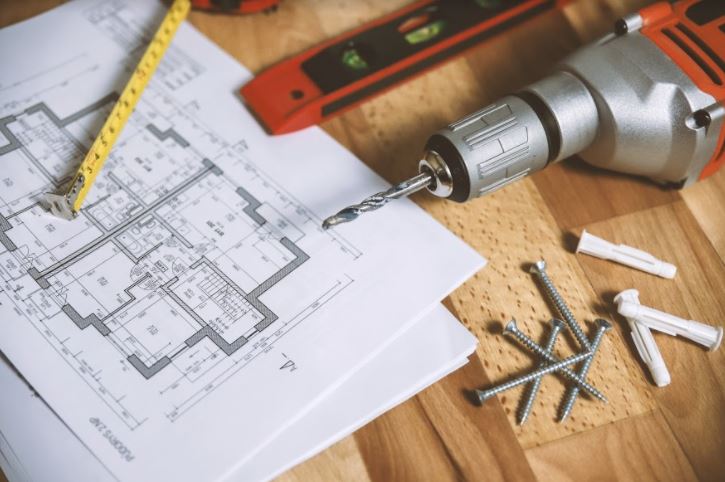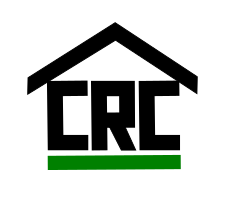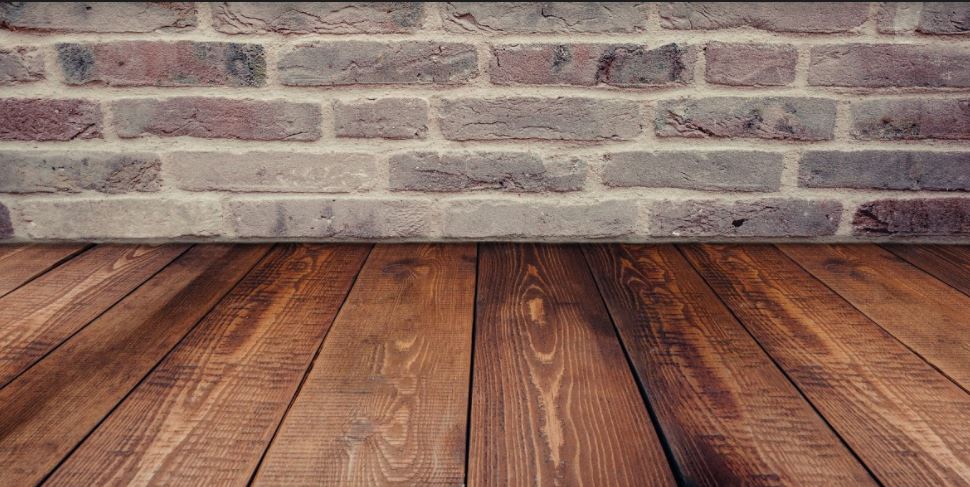Calgary home improvement renovation - which trades do you need?
Your Calgary home improvement renovation may be very simple or quite complex. Regardless it will likely involve quite a few trades and getting a better understanding of who you will need to work on your renovation, will be helpful in the planning process. Remember there always in a optimal sequence of trades as you work through your renovation and we will high light the main ones here to help get the ball rolling. Whilst every project is different we will list trades in there usual order from start to finish, but please be aware this order is not definitive and certain trades also have to come in more than one time through out the renovation.

Calgary home improvement renovation - trades for front end of your project (the guts)

Demolition and remediation
Asbestos remediation is a risk in any house built prior to 1986 and you need to have your house tested if yours falls into that category. Hopefully you do not have to deal with asbestos as remediation is expensive and eats into the budget. Generally demolition is needed on most renovations but although doing demolition is not rocket science, knowing where to start and stop is a lot more challenging! This can not be accurately defined without a clear scope of work and sometime peoples forget about the knock on effect of renovation (e.g. if you pull the ceiling drywall down below an attic space, you will also be looking at insulation falling down too). Also remember with demolition that doing it right means leaving surfaces properly prepared for the next stages and poor preparation can lead to delays or poor quality later.

Framing
Framing can be a simple as putting in a non-load bearing interior wall, to very complex framing of new structures or alterations to existing load bearing elements. Remember when you are modifying an existing structure, when you remove a load bearing element, you have to support the remaining structure until the new one is put in place. Also if your property is older or has been through a renovation, never assume the existing structure is fine, we have come across many houses where load bearing elements have been altered or even removed permanently without consultation. This is very dangerous and could result in a catastrophic failure of the building! Whilst thankfully not common I have come across several homes in Calgary that were seriously at risk of structural failure. Remember it really doesn't make sense to invest tens or hundreds of thousands of dollars into a home renovation if the very structure it is built on is not sound.

HVAC
Heating, ventilation and air conditioning systems while not exactly the most fun part of your renovation, they are very important to your long term enjoyment of it. Far too often these elements are ignored or little thought about and planned for, but a renovation is an ideal time to address or upgrade your systems. Also think about where new heat runs and cold air returns can be located, as removing walls can make this very challenging and often result in an imbalanced or poorly functioning system. Another aspect not to over look is your humidifier, which is extremely important in properly maintaining hardwood floors.

Plumbing
When planning your plumbing, remember drains have to slope downwards so when they run through your joist space or in the basement slab, the longer the run is the more fall you will need. Also remember that waterlines can not run in exterior walls, so if you are planning a bathroom, locate the plumbing in an interior wall, or you will need to build a plumbing wall inside your exterior wall. You will also need vent stacks from sinks and sometimes these can get forgotten about and may be difficult to hide or locate. The age of your property will also impact routing option with newer i-joists system allowing to go through the centre of the webbing, whilst older dimensional lumbar can not have any significant holes cut in them or their structural integrity will be compromised.

Electrics
New electrical code means much more electrical circuits have to be arc fault protected (GFCI). Whilst the advent of LED has helped reduced electrical capacity for lighting, some other items such as steam showers or induction cook tops, need a large draw and often require their own dedicated 30 or 50 amp circuit. Depending on if your electrical distribution board has space or not, you may need a new electrical panel or sub-panel to service your renovation needs. Also if you are planning to route new electrical circuits through a developed part of your home, you are not planning to renovate, consider what impact and cost this might have.

Insulation and drywall
For some people redoing insulation and drywall is a necessity due to what has to be removed to undertake their renovation. For others one of the focuses of doing their renovation is to upgrade their insulation and make their home more thermally efficient. Did you know though that different types of insulation can have drastically different costs? Ceiling finishes have changed over time and renovations are often a good opportunity to upgrade to a new look. When planning your renovation remember just minimizing the quantity of drywall without due consideration to the number of joints and mixture of new and old, if often not the best overall approach.
When looking at your renovation never consider one trade in isolation, without knowing the knock on effect to other related trades. A seemingly simple change can result in several other trades being implicated and therefore the cost for this change may be far greater than you originally thought!

Calgary home improvement renovation - trades for back end of your project (the fun stuff)

Millwork
Millwork is probably the most exciting and biggest ticket item of your renovation, (especially if a kitchen is involved). Cabinets are highly visual, tactile and functional, so getting your mill work right is very important. There are a myriad option for cabinets and it is all too easy to get carried away with all the cool options inside your cabinets! This is certainly one key area where you need to keep disciplined, if you don't want your budget to grow significantly. Remember in a cabinet you have multiple handles, drawer sliders,drawer boxes etc, so every decision you make can be multiplied many times over and really impact the bottom line.

Counter tops
Counter tops are another highly visual aspect of a home renovation and there are some absolutely stunning options out there! Granite has been very popular over the years, but in recent years Quartz has become increasingly popular. Prices can vary dramatically and it is to get carried away in a nice showroom. Also remember that your counter top needs to be practical and a leathered granite for example can look spectacular, but is way harder to keep clean. For planning you also need to consider support for overhangs. With large islands and sit up area becoming increasing popular, you need to ensure you have the right support underneath and know what type is best for you.

Finishing
Your doors, base board, casing, closets, shelving and other finishing aspects can have a big impact on the finished renovation. Apart from looks, for doors you should consider where to use solid and hollow core construction. Also for closets the material you use can massively impact the cost. Remember prefinished products do not need painting, where as commonly used material such as MDF will need painting and this will often double the overall cost. Strategic planning will really help to minimize your costs.

Stairs
Stair cases are often a focal point in a home and upgrading these can make a big difference! There are many options but remember custom forged metal spindles will often cost several times more than regular factory produced items. Also don't forget about what to do with your stringers, stringer caps and the shoe for the railings. These can be overlooked, but the cost for doing them is not insignificant.

Painting
Whilst painting itself has to be done on walls, possibly ceilings, trim and other site made built ins and closets, there are still certain things that can help keep a lid on pricing. Darker colors are usually more difficult to paint and particularly paint over and the more colors you use the higher the overall cost per unit area will be. Staining of wood is also more expensive than using a solid wood paint.


Flooring
There are literally thousands of hardwood, laminate, vinyl, tile or carpet options out there (not to mention other more specialist finishes). Hardwood has been very popular over the years and one key challenge with this is whether it is better to keep existing hardwood and patch in new areas or to go with all new? Luxury vinyl plank is growing in demand and its visual appearance has come on leaps and bounds recently. However one aspect you need to consider for all types of flooring is what type of sub-floor you need and how good condition or level this needs to be. In a basement where you are installing over existing concrete the cost implications become even greater and proper floor leveling needed for any hard type of flooring product (that needs to be installed to manufacturers tolerances in order not to void the warranty), can sometimes run into the thousands!

Tiles
Tile comes and all shapes, sizes and colors. Small accent tiles look amazing but also have a high cost per square foot, so getting the balance between having enough and too much is important. You also need to remember that while the supply cost of accent tile is much higher, so is the install cost, so the cost increase is a double whammy! Also any glass tile will also need a high level of prep as you can see through the tile. For floor tile consider whether you want heated tile, which is very nice, but will add cost (and also requires its own electric circuit to power it).

Glass
Whilst mirror cost will be impacted by size, type of edging and whether you cut holes in it for receptacles or light fixtures, where the glass cost really gets big is for showers. More and more people are using frameless 10mm glass for shower enclosures and it does give you that wow factor for a master ensuite for example. However for maybe a less important bathroom such as one in the basement it is worth considering using thinner 5 or 6mm framed glass. Whilst the look may not be as impressive 10mm frameless glass has to be tempered and per unit area is usually at least 2-3 times the cost.

Lighting
Pot lights are used extensively in homes today and LED are taking over from halogen. Whilst LED may cost more than halogen on a per unit supply and install basis, they use only less than 20% of the electricity to operate, so running costs over the long term will be drastically less. Always look at the big pictures of cost over the long term, rather than straight purchase price, when you are selecting an item that consumes energy. Also think about mood lighting and where to have dimmer switches, as well as if you are planning to hook up your lighting to a smart home system.

So are you ready for us to help you with your renovation project?




